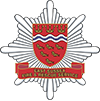Overview of Legislative Requirements
- Under the Building Safety Act 2022 and its subordinate legislation, Accountable Persons (APs) and the Principal Accountable Person (PAP) for high-rise residential buildings are mandated to create and maintain essential documents.
- APs who also serve as PAPs have additional documentation responsibilities.
- These documents must be shared not only with key stakeholders but specifically with Fire and Rescue Services as required by legislation.
- APs or PAPs who are also the Responsible Person (RP) under the Regulatory Reform (Fire Safety) Order 2005 bear further responsibilities.
Communication Protocol
Submit all required and requested documentation to the East Sussex Fire and Rescue Service via the specified email address: Exchange.Of.Information@esfrs.org.
The email MUST be clearly labelled with "BSA Information" followed by the building’s name and address.
Specific Documentation to Be Provided
Contact Details:
- If the AP is also an RP, include the RP’s name, address, and contact number, along with access details for others who are permitted to enter the building.
Building and Safety Information:
- Fire safety risk assessment outlining general fire precautions as per regulations.
- Strategies employed to manage the risk of fire spread within the building.
- Key information about the building that the PAP has submitted to the Building Safety Regulator.
- Construction plans for parts of the building.
- A detailed list of fire safety management measures and their locations.
- The evacuation strategy for the building, which includes:
- Procedures for evacuation.
- Timing and methods of evacuation.
- Information on fire safety measures aiding evacuation.
- Fire safety management documents specific to the part of the building under the AP's responsibility.
- Safety Case Report.
- Documentation related to the refusal of a Building Assessment Certificate, if applicable.
Information Exceptions
- Fire and Rescue authorities may request any additional information and documents related to building safety, which must be provided.
- However, APs/PAPs should only provide personal data when it pertains to identifying, assessing, or managing building safety risks or concerns related to the structural and fire safety of the building.
Handling of Sensitive Information
- Certain information may be commercially sensitive and not intended for the public domain if it reveals specifics about business activities.
- Commercial sensitivities are not applicable to details about fire safety management, evacuation procedures, external wall compositions, floor plans, lift locations, and primary firefighting equipment.
- For buildings registered with the Building Safety Regulator (BSR), commercial sensitivities do not cover the most up-to-date registration information.
Additional Resources
- Further details can be accessed through the link: High-rise residential building information accountable persons must provide - GOV.UK
Specific Actions for Accountable Persons (APs), Principal Accountable Persons (PAPs), and Responsible Persons (RPs)
Accountable Persons (APs)
Document Management:
- Maintain comprehensive documentation related to the building’s structure and safety, including fire safety assessments and evacuation strategies.
- Keep an updated list of fire safety management measures and where they are located.
Information Sharing:
- Provide all required safety information to the local fire and rescue authority.
- Ensure that any updates or changes to safety measures or building structure are promptly communicated.
Emergency Preparedness:
- Develop and regularly update the building's evacuation plan.
- Clearly outline and communicate the evacuation procedures to all building occupants.
Principal Accountable Persons (PAPs)
Enhanced Document Oversight:
- In addition to maintaining the documents required of APs, oversee and ensure the integrity of all safety documentation across the building.
- Submit detailed building information to the Building Safety Regulator for compliance and monitoring.
Compliance and Reporting:
- Report any refusal of a Building Assessment Certificate and maintain records regarding the refusal.
- Ensure that all documentation is compliant with both the Building Safety Act 2022 and the Regulatory Reform (Fire Safety) Order 2005, where applicable.
Stakeholder Communication:
- Act as the primary point of contact for fire and rescue services, regulatory bodies, and other stakeholders regarding building safety.
- Provide clear and detailed information on the building's fire safety protocols and management measures.
Responsible Persons (RPs)
Safety Coordination:
- Coordinate with APs/PAPs to ensure that fire safety measures and evacuation strategies are understood and implemented effectively.
- Manage the access rights to the building for emergency services and maintenance personnel.
Record Keeping:
- Keep a record of all persons who have access to the building, including contact details and roles.
- Maintain up-to-date information on all safety measures and their locations within the building.
Emergency and Risk Management:
- Implement the evacuation strategy during drills and actual emergencies.
- Continuously assess and update fire risk assessments to reflect any changes in building usage or structure.
General Guidelines for All Roles
Communication with Authorities:
- Submit all required and requested documentation to the East Sussex Fire and Rescue Service via the specified email address: Exchange.Of.Information@esfrs.org. The email should be clearly labeled with "BSA Information" followed by the building’s name and address.
Handling Sensitive Information:
- Manage sensitive information carefully, ensuring that only necessary personal and commercial data is shared, strictly adhering to data protection laws.
Continuous Education:
- Stay informed about changes in legislation and safety requirements through official resources like the GOV.UK link provided in communications and compliance guidelines.
These detailed actions help ensure that APs, PAPs, and RPs fulfill their roles effectively, maintaining building safety to the highest standards required by law.
